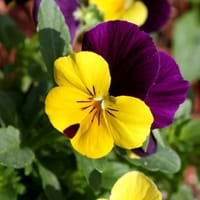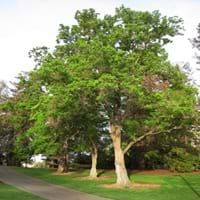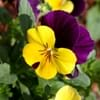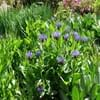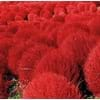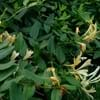Life Span
Annual
Perennial
Type
Flowering Plants
Tree
Origin
Asia, Europe
Eastern Asia, China
Types
Blue & Purple Rain viola, Bowles' Black pansy, Fizzy Lemonberry pansy, Karma Yellow pansy
Candleberry tree
Number of Varieties
Not Available
Habitat
Fields, gardens, meadows, rocky outcrops, wastelands
Saline Soils, Upland, Upland soils
USDA Hardiness Zone
4-8
8-10
Sunset Zone
A1, A2, A3, H1, H2, 1a, 1b, 2a, 2b, 3a, 3b, 4, 5, 6, 7, 8, 9, 10, 11, 12, 13, 14, 15, 16, 17, 18, 19, 20, 21, 22, 23, 24
H2, 8, 9, 12, 13, 14, 15, 16, 18, 19, 20, 21
Habit
Cushion/Mound-forming
Oval or Rounded
Minimum Height
Not Available
Minimum Width
Not Available
Flower Color
Blue, Orange, Pink, Red, White
Yellow
Flower Color Modifier
Bicolor
Bicolor
Fruit Color
Not Available
White, Ivory
Leaf Color in Spring
Green
Green
Leaf Color in Summer
Green
Green
Leaf Color in Fall
Green
Yellow, Red, Orange
Leaf Color in Winter
Green
Not Available
Leaf Shape
Ovate
Heart-shaped
Plant Season
Fall, Spring, Summer, Winter
Spring, Summer, Fall
Sunlight
Full Sun
Full Sun
Type of Soil
Rich, Well drained
Clay, Loam, Sand
The pH of Soil
Acidic
Acidic, Neutral, Alkaline
Soil Drainage
Well drained
Average
Bloom Time
Fall, Spring
Spring
Tolerances
Not Available
Cold climate, Drought, Pollution, Salt
Where to Plant?
Container, Ground, Pot
Ground
How to Plant?
Seedlings
Grafting, Seedlings, Stem Planting, Transplanting
Plant Maintenance
Medium
Medium
Watering Requirements
It cannot sustain wet-feet, Keep the ground moist but not water-logged, Requires regular watering, Use and maintain water-efficient soaker hoses
Average Water Needs, Medium, Requires watering in the growing season
In Summer
Lots of watering
Lots of watering
In Spring
Moderate
Moderate
In Winter
Average Water
Average Water
Soil pH
Acidic
Acidic, Neutral, Alkaline
Soil Type
Rich, Well drained
Clay, Loam, Sand
Soil Drainage Capacity
Well drained
Average
Sun Exposure
Full Sun
Full Sun
Pruning
Cut or pinch the stems, Prune after flowering, Prune for shortening long shoots, Remove deadheads
Remove damaged leaves, Remove dead leaves, Remove dead or diseased plant parts, Remove deadheads
Fertilizers
All-Purpose Liquid Fertilizer
fertilize in growing season, Less fertilizing, Nitrogen
Pests and Diseases
Aphids, Crown rot, Downy mildew, Gray mold, Mosaic viruses, Powdery mildew, Root rot, Slugs, Snails, Spot anthracnose
Insects, Red blotch
Plant Tolerance
Drought
Cold climate, Drought, Salt
Flowers
Yes
Insignificant
Flower Petal Number
Single
Single
Foliage Texture
Medium
Medium
Foliage Sheen
Matte
Matte
Attracts
Not Available
Not Available
Allergy
Not Available
Nausea, Toxic, Vomiting
Aesthetic Uses
Beautification, Bouquets, Showy Purposes
Landscape Designing
Beauty Benefits
Not Available
No Beauty Benefits
Environmental Uses
Air purification
Absorbs greenhouse gases, Absorbs huge amounts of CO2, Air purification, Amazing growth rate, Erosion control, Food for insects, Forms dense stands, Nesting sites for birds, No fertilizer, pesticides, or herbicides needed, Prevent Soil Erosion, Shadow Tree, Shelter for wildlife, Soil protection, soil stabilisation, Used to establish native woodland, Very little waste, Wildlife, Windbreak
Medicinal Uses
Asthma, epilepsy, Heart problems
Boils
Part of Plant Used
Flowers, Leaves
Fruits, Leaves, Seeds
Other Uses
Not Available
Employed in herbal medicine, Showy Purposes, Used as firewood, Used for its medicinal properties
Used As Indoor Plant
Yes
No
Used As Outdoor Plant
Yes
Yes
Garden Design
Bedding Plant, Feature Plant, Foundation
Feature Plant, Shade Trees, Street Trees
Botanical Name
Viola tricolor var. hortensis
TRIADICA sebifera
Common Name
Pansy
Chinese Tallow
In German
Stiefmütterchen
chinesisch Talg
In French
Pensée
chinesisch Talg
In Spanish
Pensamiento
suif chinois
In Greek
πανσές
κινέζικο ζωικό λίπος
In Portuguese
amor-perfeito
sebo chinesa
In Polish
Bratek
chiński łój
In Latin
Cinaede fill
Chinese adipe
Phylum
Anthophyta
Embryophyta
Class
Magnoliopsida
Magnoliopsida
Order
Malpighiales
Malpighiales
Family
Violaceae
Euphorbiaceae
Clade
Not Available
Angiosperms, Eudicots, Rosids
Tribe
Not Available
Hippomaneae
Subfamily
Not Available
Euphorbioideae
Number of Species
Not Available
Not Available
Season and Care of Pansy and Chinese Tallow
Season and care of Pansy and Chinese Tallow is important to know. While considering everything about Pansy and Chinese Tallow Care, growing season is an essential factor. Pansy season is Fall, Spring, Summer and Winter and Chinese Tallow season is Fall, Spring, Summer and Winter. The type of soil for Pansy is Rich, Well drained and for Chinese Tallow is Clay, Loam, Sand while the PH of soil for Pansy is Acidic and for Chinese Tallow is Acidic, Neutral, Alkaline.
Pansy and Chinese Tallow Physical Information
Pansy and Chinese Tallow physical information is very important for comparison. Pansy height is 1.50 cm and width 0.75 cm whereas Chinese Tallow height is Not Available and width Not Available. The color specification of Pansy and Chinese Tallow are as follows:
Pansy flower color: Blue, Orange, Pink, Red and White
Pansy leaf color: Green
Chinese Tallow flower color: Yellow
- Chinese Tallow leaf color: Green
Care of Pansy and Chinese Tallow
Care of Pansy and Chinese Tallow include pruning, fertilizers, watering etc. Pansy pruning is done Cut or pinch the stems, Prune after flowering, Prune for shortening long shoots and Remove deadheads and Chinese Tallow pruning is done Remove damaged leaves, Remove dead leaves, Remove dead or diseased plant parts and Remove deadheads. In summer Pansy needs Lots of watering and in winter, it needs Average Water. Whereas, in summer Chinese Tallow needs Lots of watering and in winter, it needs Average Water.
